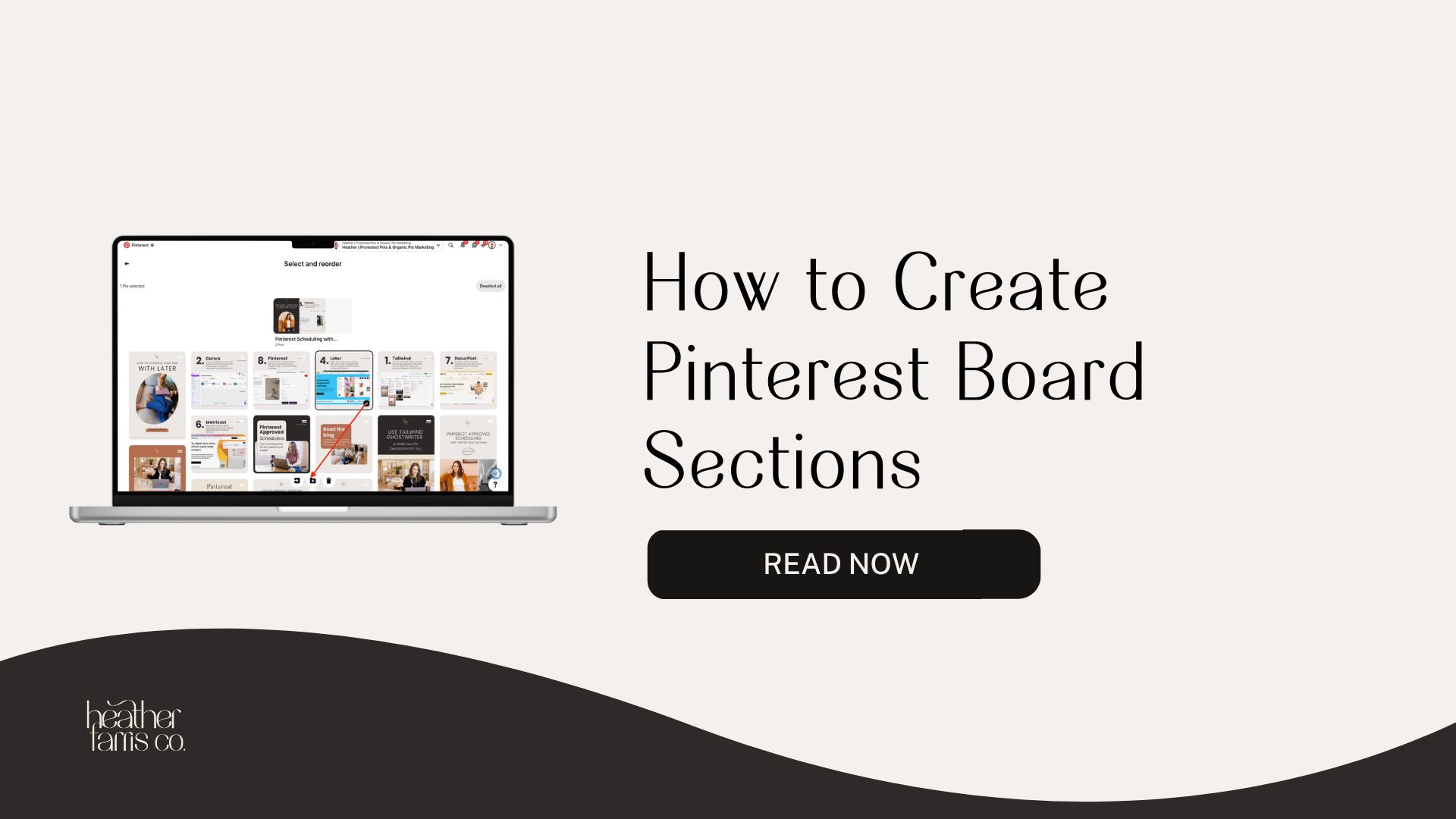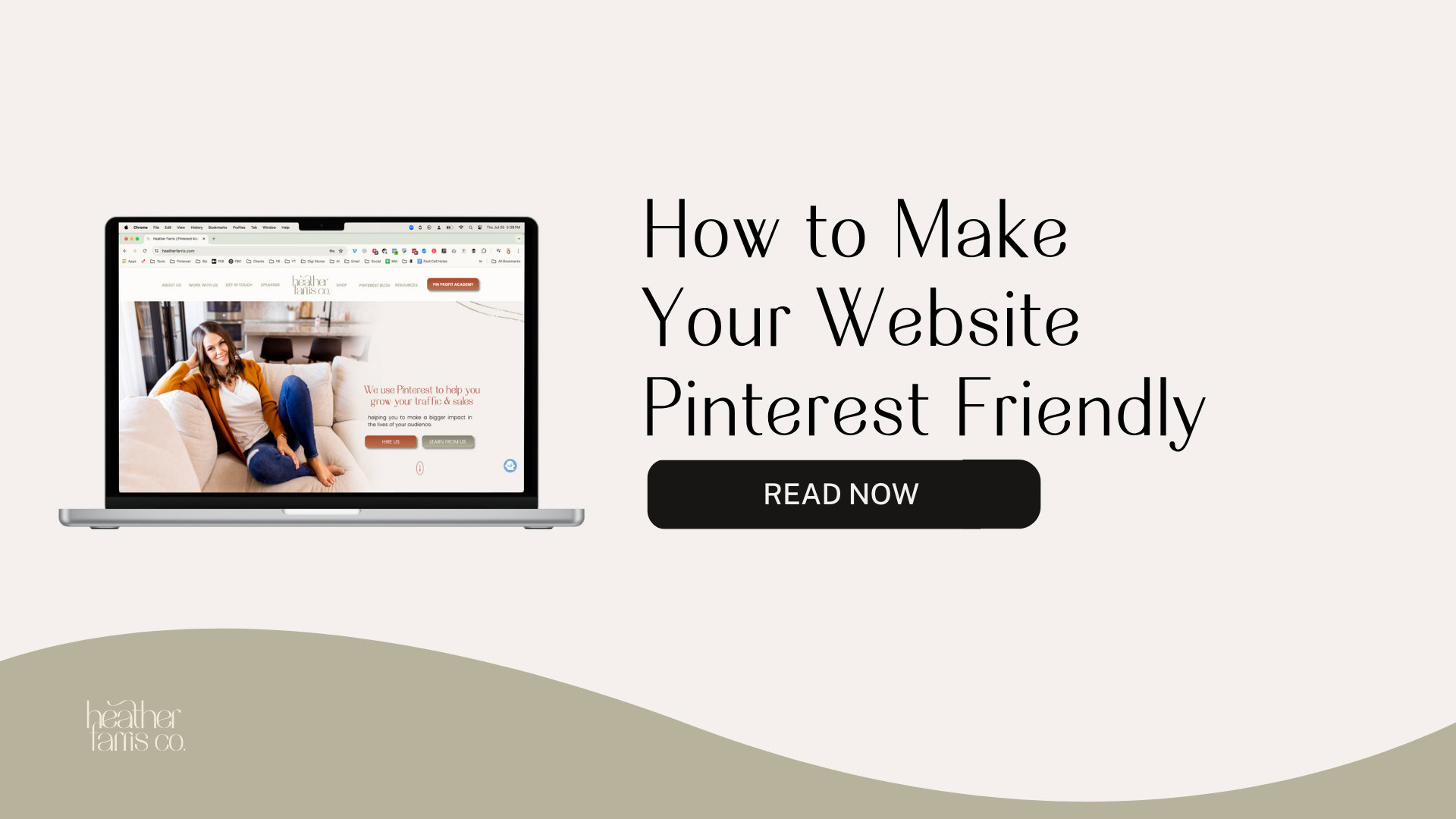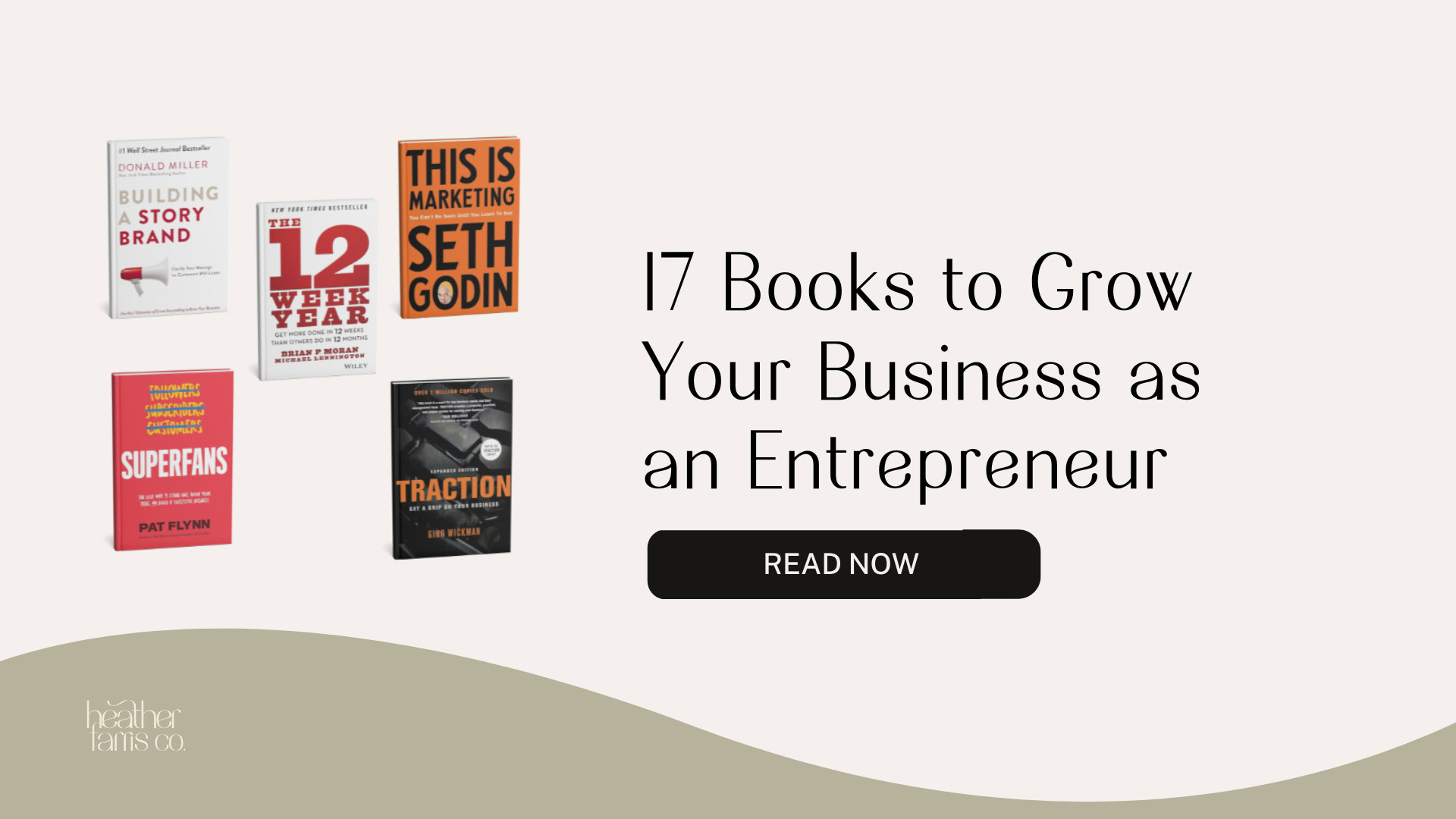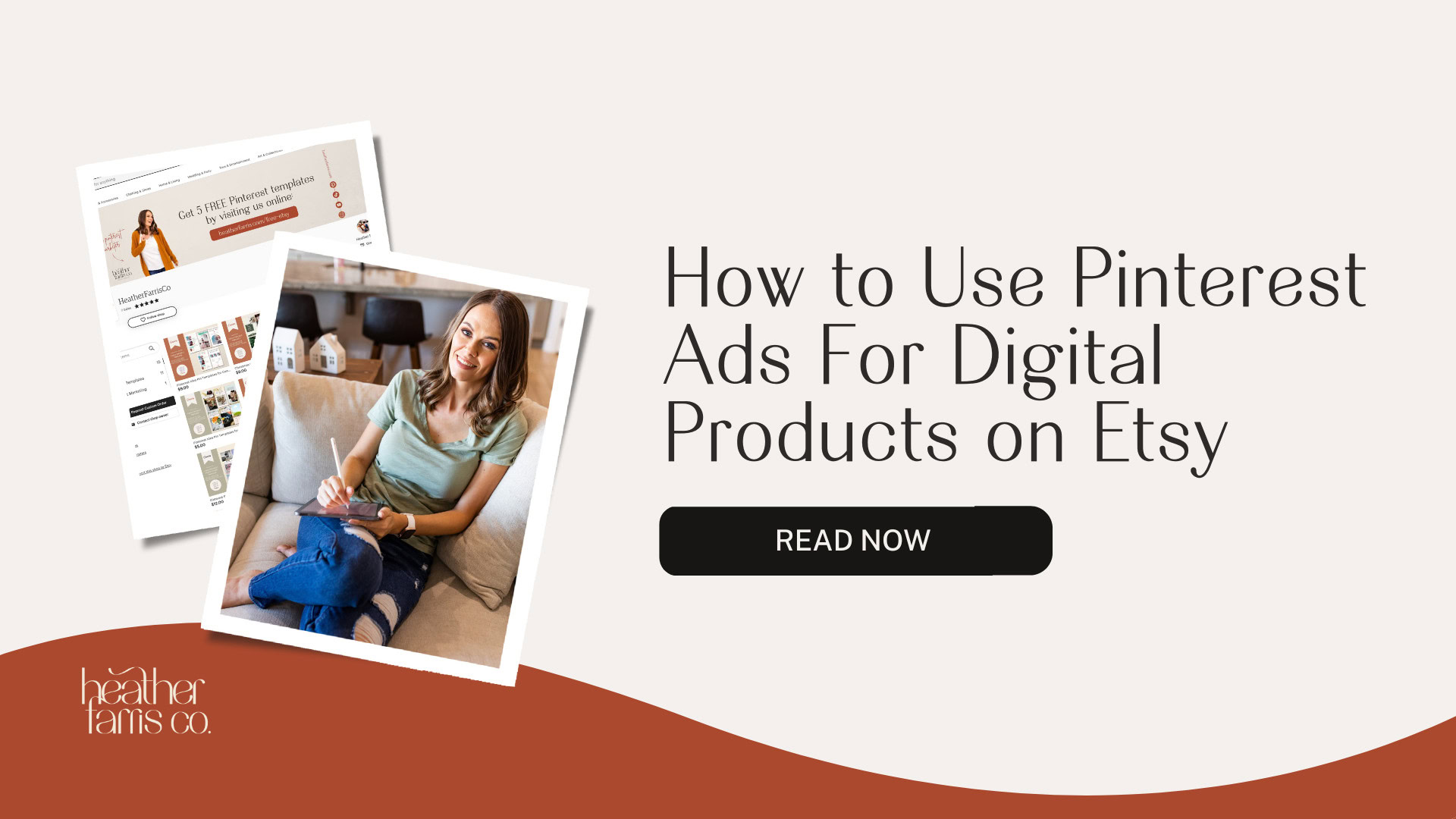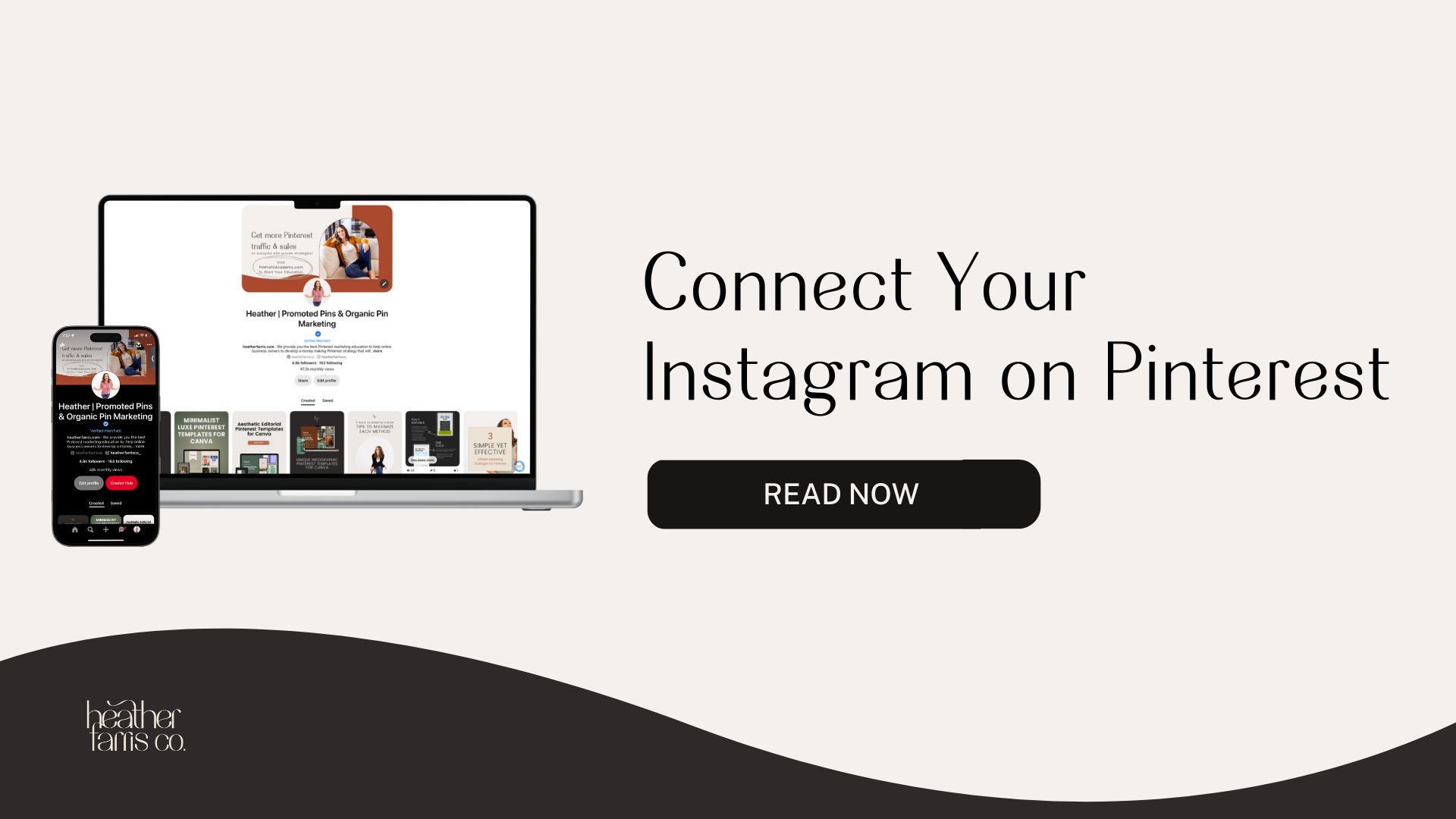Heather is a seasoned
Pinterest marketing expert & educator using the platform since you could reach the bottom of the feed - 2010.
About Heather Farris >
Pinterest Ads vs Facebook Ads: Which Strategy is Better?
June 21, 2023
You have an advertising budget, but where do you spend it? That is the question we will dive into today. Today we’ll talk about best practices with Pinterest ads vs Facebook ads, the differences between the two, and how to choose what’s right for you.
What is the difference between Facebook Ads & Pinterest Ads?
There is a difference between the two advertising platforms and I believe for most businesses there is a time and place for running ads on either.
Now there is one caveat to whether you should run ads on either platform and that is whether or not your audience is on the platform. If your audience isn’t there then you probably shouldn’t invest there.
So let’s breakdown the difference in Pinterest Ads vs Facebook Ads on a level most people don’t talk about.
I’m going to cover:
- User Intent
- Targeting Options
- Objectives
- Cost
- Imagery
So let’s dive in.
What is the User Intent for Facebook?
Most users who are on Facebook are there to interact with their family and friends. They are there for communities and social networking.
When they see ads on Facebook they are more likely to purchase through impulse because they aren’t on the platform shopping.
They are on the platform in communities and if they see your ad while they’re on the platform then that is a win for you.
What is the User Intent on Pinterest?
Pinners go on Pinterest to search and plan so the reason they are on the platform is different.
The majority of pinners are looking for content earlier than when they need it. For example, in 2020 they started looking for Christmas content in April.
They plan intentionally and execute strategically and that’s how I tell my clients & students to think when it comes to Pinterest as well.
What are the Facebook Ads Targeting Options?
With the Facebook ads platform you definitely have a lot of targeting options. You can get so granular in the targeting and it’s because of the amount of data that Facebook knows about us.
Here are some of the options:
- Location
- Demographics
- Age, gender, education, employment, household and lifestyle details
- Behavior
- Target based on things like devices they use or their likelihood to purchase
- Connections
- Interests
- Contact lists
- App users
- Site visitors
- Devices
- Languages
- Lookalikes to a current audience
- Expanded targeting
While there are a ton of audiences you can build on Facebook sometimes it’s better to go broad. Your strategy will vary depending on your target audience, your offer, the time it takes to convert them, etc.
What are the Pinterest Ads Targeting Options?
While you can’t target people based on someone they follow on Pinterest like you can on Facebook you can get pretty detailed in your targeting.
One major difference between Facebook and Pinterest is the keyword targeting feature.
The primary feature of Pinterest is the search bar because pinners are using it as a search engine.
So let’s dive into the other targeting options you can use on Pinterest.
- Keywords
- Interests
- Custom audience uploads
- Site visitors
- Lookalike audiences
- Engagement audience
- Demographics
- Gender, age, languages, device, location
- Expanded
- Browse & search
I have found the interest and keyword targeting on Pinterest very powerful and a great way to build an engaged audience ready to take action.
What Can You Optimize for on Facebook?
Facebook allows you to choose between a myriad of conversion events.
Here are the most common but know there are more:
- Purchase
- Lead
- Add to Cart
- Page Visit
- Subscribe
- Search
- View Content
- Add to Wishlist
What Can You Optimize for on Pinterest?
- Signup
- Lead
- Custom
- Page Visit
- View Category
- Search
- Add To Cart
- Checkout
- Watch Video
If you are new to Pinterest Ads and the events you are wanting to optimize towards are not in your ads manager when you create your ad it simply means those events have not fired on your site.
What are the Objectives I Can Choose for Facebook Ad Campaigns?
When you setup your ads on Facebook you can choose between some of the following:
- Traffic
- Video views
- Traffic
- Conversion
- Brand Awareness
What are the Pinterest Ad Campaign Objectives?
On Pinterest you can choose from the following:
- Brand awareness
- Video views
- Consideration
- Conversions
- Catalog sales
- Web Sessions
What are the Costs of Facebook Ads vs Pinterest Ads?
This is going to depend heavily on your audience and your offer among many other things.
On average, among my entrepreneur friends we are seeing anywhere from $0.50 per lead up to $2 per lead on average.
For Pinterest we are seeing anywhere from $0.50 to $1.50 per lead.
This is just during writing this post and isn’t historical data so take this with a grain of salt.
Where Do You Spend Your Advertising Budget?
I ran ads for clients on Pinterest in about every niche, including webinar funnels, and lead generation ads, all the way over to e-commerce selling physical products that people have to ship out of their homes.
It’s going to depend on how quickly you want to see returns, how much you have to spend and where your audiences are hanging out. Chances are you can pair both of these platforms together.
I run a lot of top of funnel lead generation ads on Facebook and retarget on Pinterest. So take a peek at the pros and cons of each platform and you’ll hopefully be able to make a decision for yourself because unfortunately no one can tell you where to spend your money. If they do, maybe find someone else to get advice from.
Facebook Ad Imagery
Facebook gives you more leeway for imagery. You can put text on your images or include video and animated graphics as well.
The greatest advantage of ad assets on Facebook is the ability to write a novel in ad text to convince someone to buy your product.
Pinterest Ad Imagery
With Pinterest ads you don’t get a long block of text to go with your image. You have to create a compelling image or video that gets people to click and take action.
The ad image that people see on Pinterest has to be very compelling and closely resemble the landing page people will land on so they aren’t confused when they land.
Unless someone saves your ad image they won’t see a description and in most cases the descriptions are not on the pin when you save an ad.
Why I Personally Love Pinterest Ads vs Facebook Ads
The half life of a Pinterest pin lasts so much longer than a Facebook post. When you run an ad on Pinterest & someone saves it then you turn your ad off you can still get leads & sales attributed to your campaign long after its off.
When you turn off a Facebook ad it’s done and can’t be found again.
Caveat: I have only ever run Facebook ads for myself, so I want you to know that as I talk about the platforms’ differences. This post is not about being an expert in Facebook ads, but I have run my own ads and had some success and losses.
So what’s the difference between the two?
While the last video was about the difference in targeting, nitty-gritty details, and the differences between the two platforms, this time, I will focus on the advantages and disadvantages of Facebook and Pinterest for advertising. The other video is still very accurate, and I encourage you to watch it.
So let’s start at the top with the advantages of Facebook for advertising.
Advantages of Facebook for advertising
#1. You can advertise to more people
One of the biggest advantages of Facebook for ads is the number of people available to advertise to. They have 2.9 billion people on the platform, but not all are available to advertise to. You can’t advertise to most people in China, as it’s blocked there. Many people in Russia who have recently been blocked from seeing Facebook have also been removed from that number.
If we go a step further and remove anyone on the platform under age to be advertised to, it only leaves you roughly 63% of that 2.9 billion population on Facebook. I say population because that is a vast number. Considering we have 8 billion people on the planet, a third is on Facebook. That’s insane! So this is just the sheer amount of people on Facebook to advertise to.
#2. You get Instagram inside your Facebook ads manager
The second advantage is that you get a whole second platform with over 1.5 billion people to advertise to. Again a part of this 1.5 billion are in the countries that you can advertise to, or they are underage. But you get Instagram right inside your Facebook ads manager, which makes Facebook a multi-platform advertising situation. So you get double bang for your buck.
I love the option to be able to advertise to both platforms inside one ad manager with one ad budget. So that’s the second advantage of advertising on a platform like Facebook.
RELATED: The Complete Pinterest Marketing Strategy I Would Tell My Friends
#3. A large number of targeting options
The third advantage to advertising on this platform is the sheer number of options for targeting. Targeting on Facebook used to be even vaster. I’m not saying that I’m hurt over the fact that Apple has changed its guidelines and policies and allowed people like me to turn off tracking and not allow my data to be shared. I love that as a consumer.
As a business owner, it hurts a little bit knowing that it used to be a lot easier to take advantage of people’s information through a platform like Facebook and advertise them to them based on all of those interests, including their household income, jobs, job titles, pages they liked, etc.
The sheer amount of targeting options available to us, even with those being decreased over the years, is one advantage to Facebook over a platform like Pinterest. If you want to know all the targeting options between the two platforms or just available on Facebook, watch my Pinterest vs. Facebook ads YouTube video or read that blog post.
#4. Instantaneous purchases
The next advantage to advertising on a platform like Facebook is that people see ads and buy on the fly, literally like instantaneous purchases. They see something, and they sign up; they see something, and they buy it. If you have a product or an offer where people don’t need to think about it a lot, that is an advantage to Facebook.
However, many of the brands I work with do not have offers, at least not a ton of offers that are impulse. They are in industries where people must think, plan, pin, save, and research. But we’ll get to Pinterest ads in just a moment.
RELATED: 7 E-Commerce Mistakes to Avoid
Disadvantages of Facebook for advertising
#1. Long approval timeline
One of the disadvantages of Facebook ads is the time it takes to get your ad approved. Sometimes it could be days, and I don’t understand why. I don’t know if actual people approve ads over there anymore. However, the approval timeline is long. Quite annoying.
#2. Need the skill to write compelling copy
As a business owner, my second disadvantage is writing compelling copy. I’m not a copywriter, and I do not like writing compelling copy. I don’t like writing sales pages, so that’s a disadvantage for me.
That may be an advantage to you. If you are good at writing persuasive copy, that might be right in your wheelhouse, and you can bump that up to the advantages. But for me, it is a big disadvantage.
RELATED: How to Use ChatGPT in Your Pinterest Marketing Strategy (+ChatGPT Prompts for Pinterest
#3. Building ads inside Facebook is confusing
The third disadvantage is the confusion when building ads inside Facebook. I don’t understand why it’s so confusing. When I get in there, I feel lost, like I’ve just walked into a store that may be inappropriate for me. I feel like I’m in the dark, wandering around, confused, getting beaten on the side of the head. I don’t know why it’s so confusing, but it is. So, to me, that’s another disadvantage to this platform.
#4. When you turn an ad off, it’s gone
One of the biggest disadvantages of Facebook ads is when you turn an ad off, it’s gone forever. Even if someone were to save your ad to their profile, lists, or collections, or however they save things, I don’t know if they can get back to it. So once you turn an ad off, it’s gone. No more organic goodness comes with that piece of content, and it is strictly a pay-to-play situation.
RELATED: Starting Pinterest Ads For the First Time? I Would NOT Do This…
#5. Facebook ads need constant attention
Lastly, the almost constant attention that Facebook ads require from you as a business owner is another disadvantage. You need to check them multiple times daily, depending on how much money you’ve put behind them.
As a business owner that runs ads anywhere from $10 to $50 a day, I check my Facebook ads once a day, maybe twice a day if I’m lucky. Because I run a lower budget daily, I don’t feel like I will lose a ton of money if I forget to look at them once a week.
In general, Facebook ads do require a lot of attention. They can fatigue fast. They can fade really fast. And they can take off really fast. And with that, you definitely need to keep a close eye on them.
My recent experiences with Facebook ads
Let’s chat about some of my most recent successes or just experiences with Facebook ads. In the fall, I launched a new product called the Pinterest Road Map. This was a complete rewrite of my organic Pinterest course inside my membership. However, I wanted to sell this as a standalone offer to funnel people into my membership long-term. So I rewrote this product and hired someone to help me with some Facebook ads.
We’ve run my ads right around two months now, as of this writing. We started sometime in October and ran them straight through to the end of November. The Facebook ads manager does not tell you when ads were started and stopped, as you can see on Pinterest. And if there is a way, please tell me. However, I guess these ads ran somewhere between 5 to 8 weeks.
Facebook ads return on spend
I’ve spent a total of $468.49 on my ads. The entire goal of this campaign was strictly for lead generation. I only wanted to get people on my email list to do an email-based launch during Black Friday. I got 183 leads and had a total cost of $2.56. That’s actually really good. It’s very cheap. Some of my ad campaigns were getting leads for close to a dollar, and others were getting leads for close to $2.50, which is where the combined average comes in at $2.56.
I can’t calculate my ROAS on Facebook. I don’t know why. It’s very annoying, but there’s no blended ROAS between all my campaigns, and I only got one purchase directly from an ad. But the majority of all of these were strictly for lead generation.
From my Pinterest Strategy Guide, get people onto my email list to get people to open my emails. That way, when it came time for a launch of the road map, they were also getting those emails.
My cost per click on Facebook was $1.59 during this time frame. This is actually a really busy time of the year. Holidays are an expensive time to run ads. So I feel like I got an excellent bargain for my Facebook ads during this time. I think the $1.59 cost per click in a B-to-B market is pretty healthy.
RELATED: Ultimate Full Funnel Pinterest Ads Strategy That Got 26X Return
Advantages of Pinterest ads
Let’s talk about the advantages of Pinterest ads. I love Pinterest ads. I’ve been doing Pinterest marketing solely as the only thing I do for seven years. So obviously, I have some bias here when I say I love Pinterest ads. But I also really enjoyed the Facebook ads that I ran. The results that we got for that were, I think, really affordable.
#1. The longevity of the ad is good
One of the advantages of Pinterest Ads is one of the disadvantages of Facebook ads that I mentioned, and it’s the longevity of the ad. Whether you upload a Pinterest ad just to be an ad or upload it into an organic Pinterest pin and then promote it, you will get some organic goodness.
The best practice here is to upload it organically and then promote it. The longevity of that pin is so good. So when you run ads on Pinterest and then turn them off, any organic versions of that pin that were saved will remain on the platform. You can then go on and have earned metrics, earned conversions from the organic version of that ad.
So it’s a big advantage of Pinterest when running ads. If you are looking for longevity, savability, and people finding this in the long run, then Pinterest is definitely going to be a platform for you.
RELATED: The Pinterest Ads Strategy I Would Tell My Friends To Use
#2. Pinterest users are in a purchase-intent frame of mind
Pinners are planners. They are literally plotting their entire lives all the time. From weddings and food and your daily birthday parties and things like that, all the way to extensive home renovations to shed builds like the new office I created for myself in December, people are planning on Pinterest. They use this platform to plan their entire life.
And with that being said, the way they use Pinterest with this planning aspect in mind puts them more in a place of purchase. So Facebook users are very impulse-driven. They see an ad, they see a product, and they buy it. Pinterest users are there for:
- Looking
- Planning
- thinking through
- making comparisons
- doing consideration between products
This puts them more in a purchase intent frame of mind than your Facebook audience.
RELATED: Free Pinterest Ads (Promoted Pins) Checklist and Strategy Guide
#3. You need graphic design skills to get results on Pinterest
The fact that Pinterest is very heavily visually oriented is a struggle for many people. Our ads on Pinterest are images. Your ads on Facebook can also be images, but there’s less emphasis on the image and more emphasis on the long-form copy on Facebook.
On Pinterest, you get an image and a header, and that’s it. What I consider or call a header is your pin title. So it’s very image or video-driven, which means you need to have solid graphic design skills to achieve great results on Pinterest.
RELATED: How To Optimize Your Pinterest Ads
#4. It has many more targeting options
The targeting you get to choose is not the same as Facebook. You get interest targeting, you get keyword targeting, and you could get broad targeting if you wanted to. There are all sorts of audience lists that you can upload. If you want to know all the targeting options for Pinterest, visit this link for more details.
You have a direct interest and keyword-based targeting on Pinterest. This means you can go after that person searching for mid-century modern leather couches, and you can sell them that couch, or you can sell them the pillows that go on it.
It makes this platform less mysterious to me because you can go directly for what people are looking for. With 24 active level 1 categories on Pinterest to use in your interest targeting, it opens up many more options than you even know of now.
RELATED: Retargeting Ads on Pinterest: How & Why to Use Them
#5. You don’t need to be a copywriter to create ads on Pinterest
Another advantage to Pinterest as an ad platform is that you don’t need to be a copywriter to create ads for the platform. That was a disadvantage for Facebook ads. For me, it’s an advantage for Pinterest ads, but it could be a disadvantage for you on Pinterest too.
If you are a copywriter and can hire a good graphic designer, you can make some good copy for your Pinterest pins. So it’s an advantage for me because I don’t have to copyright anything. But keep that in mind when you are creating your Pinterest ads.
#6. Pinterest ads dashboard is simple
Last but certainly not least is the sheer simplicity of the Pinterest ads dashboard. Now, this is a big complaint many people give me when discussing Pinterest ads. They come to me and say they’re struggling with their ads. They don’t know how to use the dashboard and are confused by all the things in there. That tells me they’ve never run Facebook ads before.
I actually love the simplicity of the Pinterest ads dashboard and the ads manager. To me, it is like the difference between an Android phone and an Apple Phone. Android phones or Windows computers have so many options. It’s easy to break things or screw something up, whereas the Apple ecosystem is simple. It’s very straightforward and user-friendly.
If you start with Pinterest, you can work your way into Facebook ads manager and be fine. It’ll take a lot of learning, but it’s simplistic. I have a couple of bonus tips, and I briefly touched on one of them.
RELATED: How to Setup Your Pinterest Ads Reporting to Know if Your Ads Are Working (or not)
Bonus #1.
If you run a Pinterest ad and someone saves it, there is a lot of longevity to that image being saved to the platform. People can return to that later and purchase or sign up for your thing. So that’s a big bonus!
Bonus #2.
The second big bonus is that Pinterest as a platform is there to be a traffic driver. It was created to direct traffic to your websites when you make Pinterest pins. Facebook wants to keep you on the platform as long as possible, so they don’t want you driving people off the platform. They created on-platform lead generation forms, so people can sign up for your email list and never leave the platform, and you still get the email address.
However, Pinterest is a long-term traffic driver, so if you create an ad, and someone saves it, they can return to it for years. So I think the fact that it is a long-term traffic driver is a big bonus. I have pins that I’ve pinned organically that still give me traffic years and years later.
RELATED: 11 Pinterest Tools & Resources to Drive Traffic to Your Website
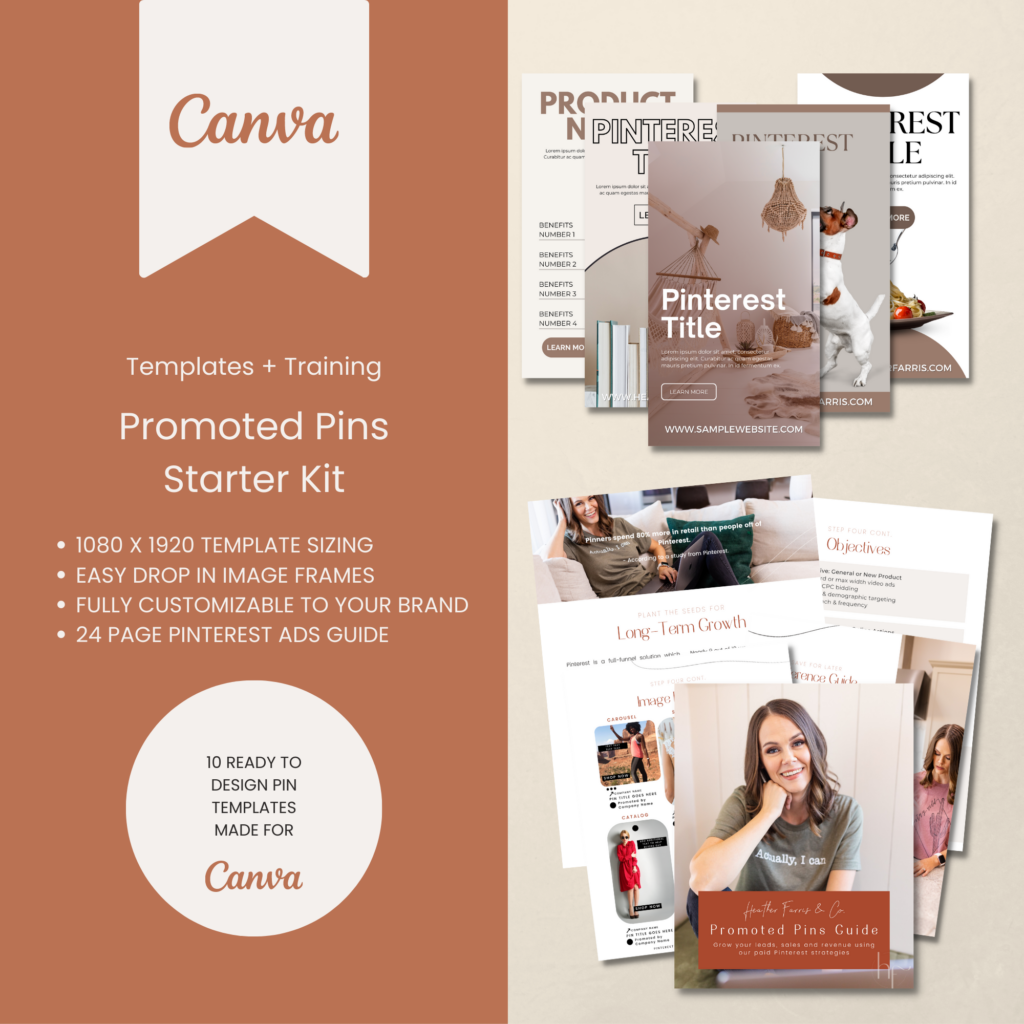
Pinterest Ads Starter Pack + Pinterest Ads Templates for Canva
Wondering how to get started with Pinterest ads but not really sure how? Look no further! This starter pack includes everything you need to jumpstart your Pinterest ads including my exclusive 24 page promoted pins guide.
This detailed starter kit will help you to understand the Pinterest ads ecosystem.
Disadvantages of Pinterest ads
Though I’d love to say there are no disadvantages to Pinterest ads because I love this platform, I don’t hold back the cons either. There are some disadvantages of Pinterest ads.
#1. Lack of targeting options
If you are used to running Facebook ads, you will be a little disappointed when you get into your Pinterest ads dashboard and realize there are only so many ways to target somebody. That can be a disadvantage to many.
RELATED: Retargeting Ads on Pinterest: How & Why to Use Them
#2. Higher reliance on imagery
If you are not a graphic designer or a video creator, chances are this might be a struggle for you when running Pinterest ads. Have no fear; I can help you.
#3. Longer purchase window
The purchase window is about 18 days on average, from the time someone sees your ad to the time they purchase that they take action. Some can be much longer than that. So, keep in mind that there is a much longer purchase window versus Facebook.
If you’re using an attribution window of 111 or even 777 on Pinterest and have a lower budget, you won’t see the results you want to see. You need a much bigger budget to use a much smaller attribution window.
#4. Pinterest ads are hard to track
Last but not least, and probably the biggest disadvantage to Pinterest ads by far, is the fact that Pinterest ads are tough to track if you’re using Google Analytics or other attribution tools. There are attribution tools where you can load in all your data, which will tell you where all your sales are coming from, much like Google Analytics on steroids, but it makes it tricky.
Pinterest is usually never reported in those because Pinterest is a first-click platform. Imagine this: Someone sees your ad on Pinterest, clicks on it, goes to your website, and views your product. They then put their phone down because they’re sitting at a red light. When they get home, they pick up their iPad and type in Heathersboutique.com because they were just on your website.
They purchase because the browsing history is connected between the two devices, right? They make a purchase. But they went directly to your website. So Pinterest really should get attribution for that sale, but Facebook or direct on your Google Analytics or email or whatever will take attribution for that.
RELATED: How to Start Using Pinterest to Drive Sales
Indirect attribution scenarios
Wherever the last point of contact happened with that sale is who takes attribution for it on Google Analytics. So just keep that in mind when you are running Pinterest ads, and you’re looking at your Google Analytics, and asking yourself: Google is telling me I’m getting all my sales from email. I need to turn off my Pinterest ads as it is a waste of money.
Hold on because chances are Pinterest is sending you sales or leads. Since every other tracking method is the last click, they are taking the attribution for it, whereas Pinterest actually sent the original click. I hope I made sense with that.
If you have questions on attribution, first click vs last click, let me know, and I will detail it further in the comments.
RELATED: Pinterest Analytics: A Simple Guide to Read & Analyze Your Data
My recent experiences with Pinterest ads
Let’s talk about some of my most recent Pinterest ads. Last fall, I ran Pinterest ads for longer than Facebook ads. I ran my Pinterest ads for about 90 days, but in this particular test for the lead generation for the same funnel for the same time frame, I ran them for about ten weeks instead of eight. There was a couple more weeks of run-up.
Because Pinterest ads take longer to optimize, I wanted them running before my Facebook ads. I ran them for about ten weeks. I spent $899.06. My cost per lead was $4.89, but my reported return on ad spend for Pinterest was $1.08. So, I actually made a bit more money than I spent. My sales paid for my cost, and I had 184 leads, one more lead total than Facebook. And my cost per click during this time was $1.04. So it was a cheaper cost per click than Facebook.
Cheaper cost per click
If you’re looking at cost per click as a measurement of which platform is better, Pinterest was a cheaper cost per click, higher cost per lead. So keep that in mind. You’ll always have a higher cost per lead in the business-to-business space versus the business-to-consumer space.
Before we wrap this up, I wanted to talk about some industry averages for my clients on Pinterest for cost per click.
- For the wedding industry, we see anywhere from a $0.33 to $1.24 cost per click.
- Organizing was anywhere from $0.44 to $5.34 on dynamic retargeting.
- The family and marriage space was $0.12 to $0.45 on average.
- In the teacher space, which is teachers selling products to other teachers, it was the cheapest at $.04 to $0.14 per click.
- In the jewelry space, it was anywhere from $0.29 to $1.93 on dynamic retargeting.
Those are the costs per click on Pinterest if you wanted to compare any of that data to your Facebook ads. They’re very fair if you’re looking at click as a measurement of success.
RELATED: How to be Successful on Pinterest? Stop Doing THIS
Final thoughts on Pinterest ads vs Facebook ads
So now that you know the advantages and disadvantages of Pinterest and Facebook ads, where would you rather spend your money? If you are in the e-commerce space or if you are thinking about running Facebook ads, I would encourage you also to run Pinterest ads.
Even if you start at a lower budget, like $20 a day, you can recoup some of that loss from one platform to the next. We see a considerable uptick in e-commerce sellers’ sales when we start a dynamic retargeting campaign first on Pinterest after they’ve been running Facebook or Google or YouTube, or LinkedIn ads. So consider the benefits and disadvantages of both platforms and decide from there what your best ad play is.
You can hire my team if you need help with your Pinterest ads. We can help you, even if it’s just a setup or a consulting call. We do all of the above. Look forward to helping you!
Pin it for later
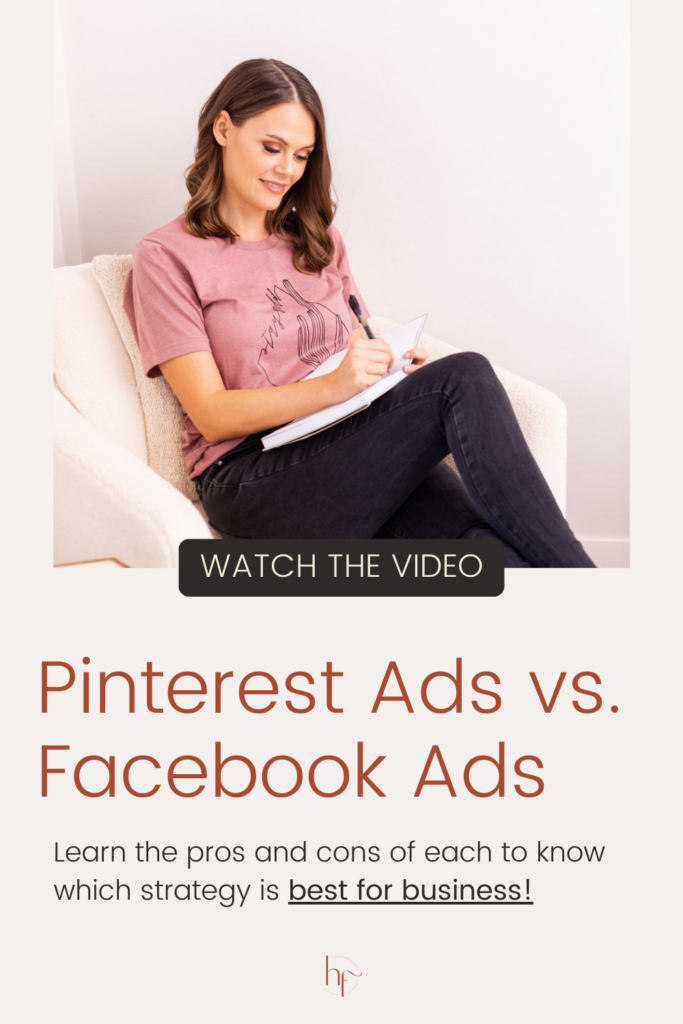
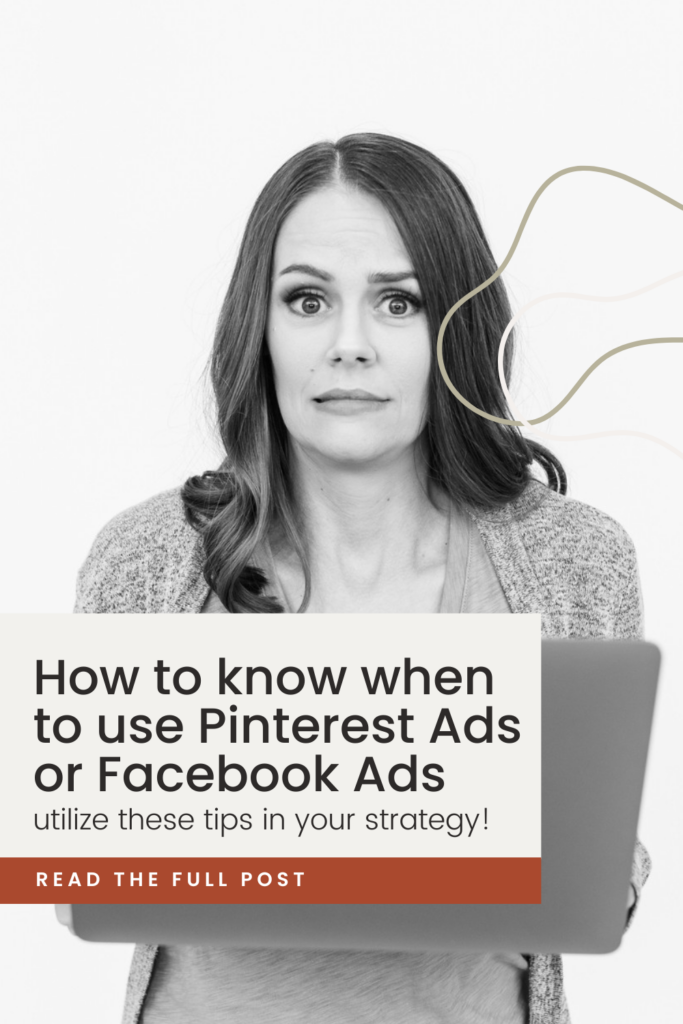
Heather Farris went to school for accounting and worked for years in banking and finance. After finding all of that entirely too boring she started her first blog in her basement in August of 2016. She has started 3 blogs in the marketing, motherhood and travel niches and used Pinterest to grow them all. She quickly became the go-to Pinterest strategist in her peer circles and has been implementing strategies, driving traffic and sales through organic and paid tactics for her clients. On this blog and her YouTube channel, as a renowned Pinterest marketing expert, she educates the public about clear and transparent marketing strategies to help them to grow on Pinterest and in other places online.

